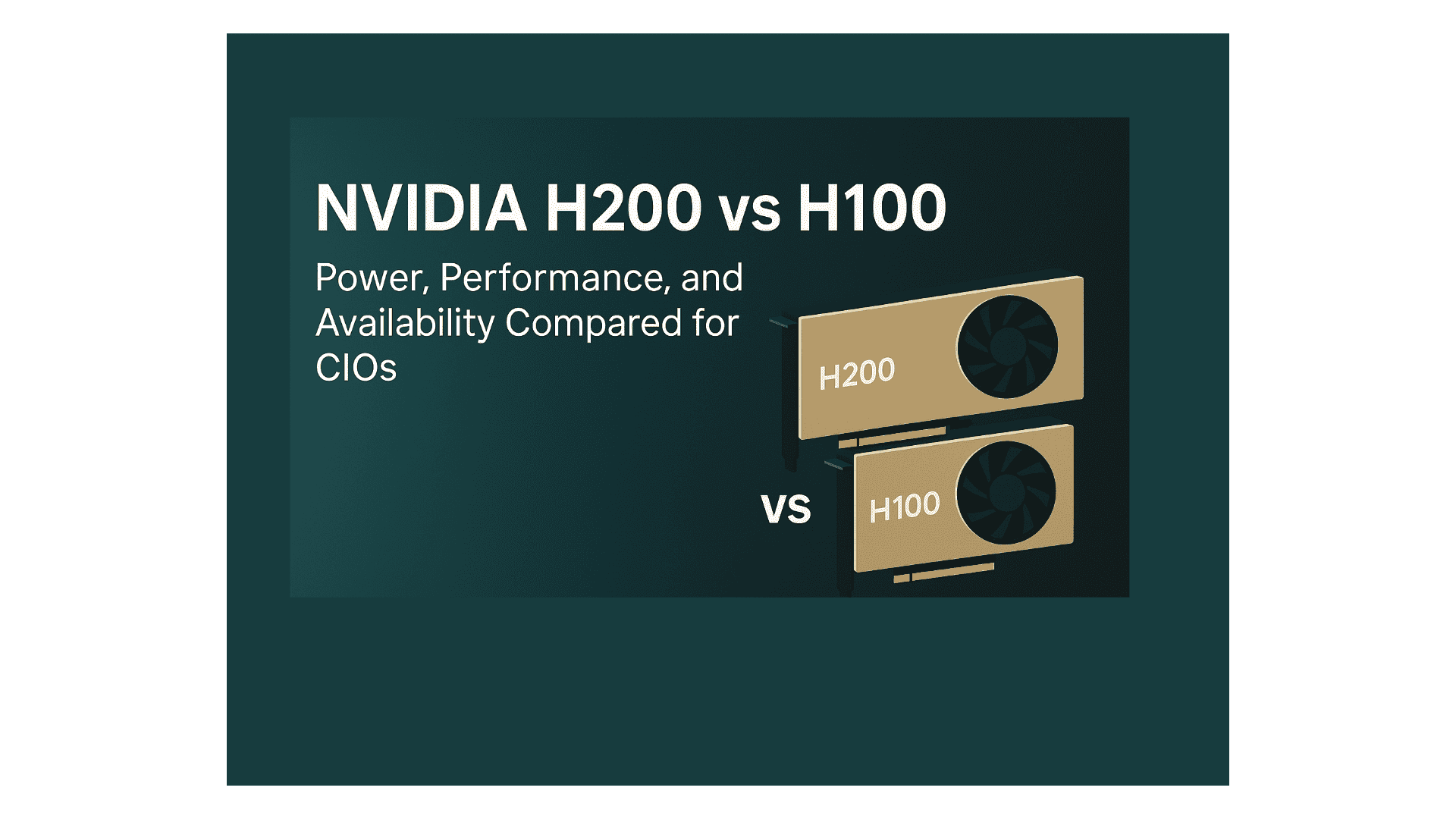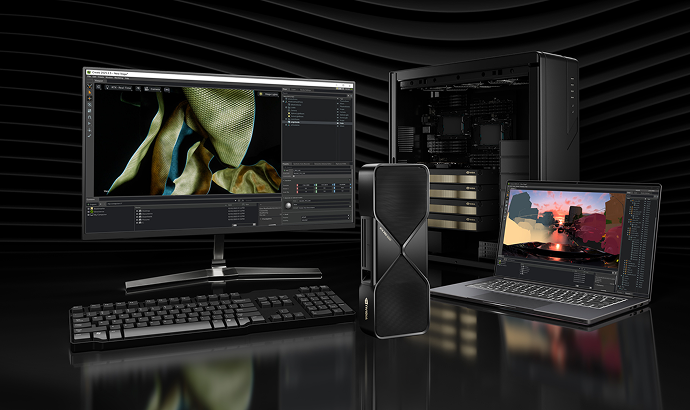

Writing About AI
Uvation
Reen Singh is an engineer and a technologist with a diverse background spanning software, hardware, aerospace, defense, and cybersecurity. As CTO at Uvation, he leverages his extensive experience to lead the company’s technological innovation and development.

The primary difference is the memory technology. While both GPUs are built on the powerful Hopper architecture, the H200 incorporates next-generation HBM3e memory. This upgrade is the H200’s critical edge, as this memory is significantly faster and more efficient, removing key data transfer bottlenecks that can limit the performance of the H100 in demanding, large-scale AI workloads.
Although the official Thermal Design Power (TDP) is similar at approximately 700W, the H200 achieves substantially more throughput per watt. This is due to its architectural tweaks and, most importantly, its upgraded HBM3e memory stack. HBM3e uses less energy to move data, meaning the H200 can process more information without an increase in power draw. This creates an “invisible gain” in efficiency that translates directly to lower operational expenses on your power bill.
The H200’s superior efficiency means it generates slightly less waste heat than the H100 for a given workload. While this may seem minor, in dense, large-scale deployments, that could mean 5% lower cooling costs. At the scale of an enterprise data center, this small percentage has a significant and positive impact on the operational budget over the hardware’s lifecycle.
These foundational hardware differences are the direct cause of the significant performance advantages the H200 offers.
The H200’s superior memory architecture changes the economics and feasibility of working with large-scale AI. Models that struggle to fit onto a single H100 can run natively on an H200—no sharding, no hacks. This dramatically reduces engineering complexity. In production, the 2x inference speed gain translates directly into business value through lower latency for end-users and smoother, more responsive AI-powered experiences. For model training, the 20% speed boost means reduced cloud hours, lower development costs, and a faster path from concept to deployment.
No, migration is generally straightforward. Both the H100 and H200 run on CUDA 12+, ensuring that existing software stacks built on frameworks like PyTorch and TensorFlow will work out of the box without requiring major refactoring. However, unlocking the H200’s full potential requires deliberate effort. Think of it like swapping in a new engine but tuning it for track performance; updating libraries and tweaking configurations is necessary to fully leverage its enhanced memory speed.
The H200’s clear performance advantages naturally lead to an analysis of its cost and long-term financial value.
The H100 GPU currently ranges from $30,000 to $40,000 per unit. The H200 is expected to carry a premium, with an anticipated price point that is 15–25% higher, likely landing between $34,000 and $50,000 per unit.
Both GPUs face significant supply constraints due to overwhelming demand.
For the H100, it remains the market’s gold standard and is in extremely high demand. This results in typical lead times of 3–6 months, with much of the available supply being allocated to large-volume buyers like hyperscale cloud providers.
For the H200, NVIDIA is prioritizing its initial shipments for hyperscalers and top-tier OEMs. This means most other buyers will face longer wait times. The supply is further constrained by a bottleneck in the production of HBM3e memory.
Given the challenging supply environment, a multi-faceted procurement strategy is essential.
Match Lead Times to Roadmaps: For AI rollouts planned for 2025, the H100 is the more realistic and safer bet due to its relative availability. For strategic initiatives planned for 2026 and beyond, pre-booking H200 orders now is critical.
Strengthen Vendor Relationships: Partner closely with established OEMs and cloud service providers. These relationships can provide priority access to reserved inventory and preferential pricing.
Diversify Deployment: Implement a hybrid model that blends on-premise H100 clusters for current needs with cloud-based H200 instances for flexibility and future-scaling.
Negotiate with Leverage: Utilize multi-year contracts and NVIDIA Enterprise License Agreements to secure more favorable pricing and predictable delivery windows.
Use Caution with the Gray Market: While third-party sellers can fill short-term gaps, they come with significant risks, including a lack of warranty, potential for firmware tampering, and compliance issues.
With a procurement plan in place, the final step is to make the strategic choice of which GPU best aligns with your enterprise goals.
Strategic Decision-Making: Choosing the Right GPU
Ultimately, the choice between the H100 and H200 is not a simple technical decision. It is a strategic one that must be carefully aligned with your enterprise’s specific AI ambitions, project timelines, budget realities, and overall risk tolerance. The right GPU is the one that best positions your organization for a competitive advantage.
The H100 remains the GPU to beat when the primary organizational priorities are speed-to-deployment and cost control. It is the smart and pragmatic choice for teams with active workloads, tight procurement windows, and a focus on general AI or mixed High-Performance Computing (HPC) tasks where its proven performance is more than sufficient.
The H200’s premium is justified for enterprises that are planning to scale their AI initiatives aggressively. It is the ideal choice for organizations focused on training and deploying large-scale LLMs, multi-modal models, and other memory-bound use cases. For cloud-based workloads, it cuts operational costs, and for on-premise deployments, its superior energy and cooling efficiency savings compound over time, delivering a strong return on the initial investment.
The H200 should not be viewed as a simple specification bump. It is a strategic hedge against obsolescence and an investment in AI velocity. The core advice for CIOs is to audit the organization’s AI pipeline, compare the long-term TCO of both platforms rather than just the sticker price, and work to secure supply chains as early as possible. In today’s competitive market, the choice of GPU is no longer just an infrastructure decision—it is a foundational source of your enterprise’s AI advantage.
We are writing frequenly. Don’t miss that.
